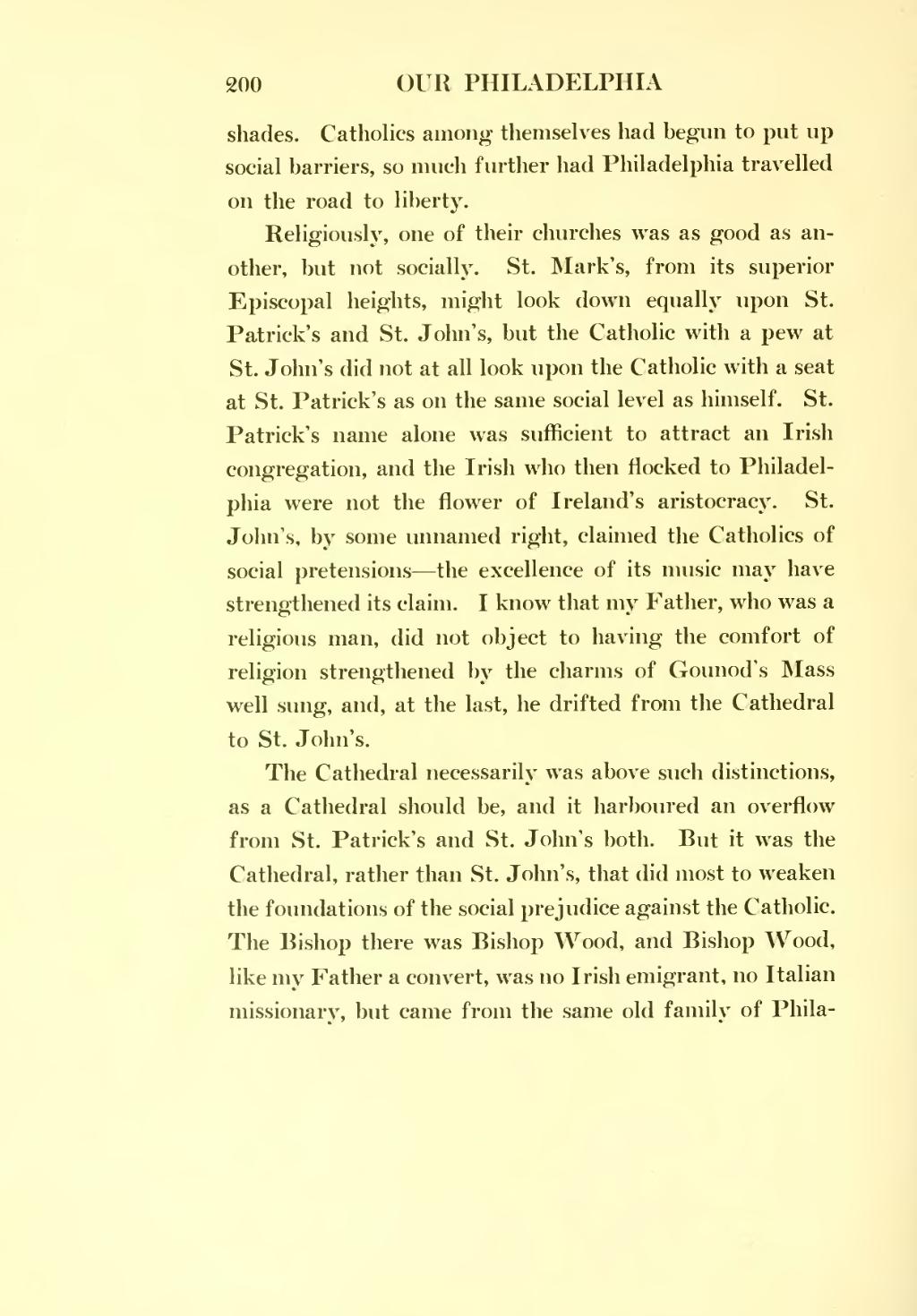shades. Catholics among themselves had begun to put up social barriers, so much further had Philadelphia travelled on the road to liberty.
Religiously, one of their churches was as good as another, but not socially. St. Mark's, from its superior Episcopal heights, might look down equally upon St. Patrick's and St. John's, but the Catholic with a pew at St. John's did not at all look upon the Catholic with a seat at St. Patrick's as on the same social level as himself. St. Patrick's name alone was sufficient to attract an Irish congregation, and the Irish who then flocked to Philadelphia were not the flower of Ireland's aristocracy. St. John's, by some unnamed right, claimed the Catholics of social pretensions—the excellence of its music may have strengthened its claim. I know that my Father, who was a religious man, did not object to having the comfort of religion strengthened by the charms of Gounod's Mass well sung, and, at the last, he drifted from the Cathedral to St. John's.
The Cathedral necessarily was above such distinctions, as a Cathedral should be, and it harboured an overflow from St. Patrick's and St. John's both. But it was the Cathedral, rather than St. John's, that did most to weaken the foundations of the social prejudice against the Catholic. The Bishop there was Bishop Wood, and Bishop Wood, like my Father a convert, was no Irish emigrant, no Italian missionary, but came from the same old family of Phila-
